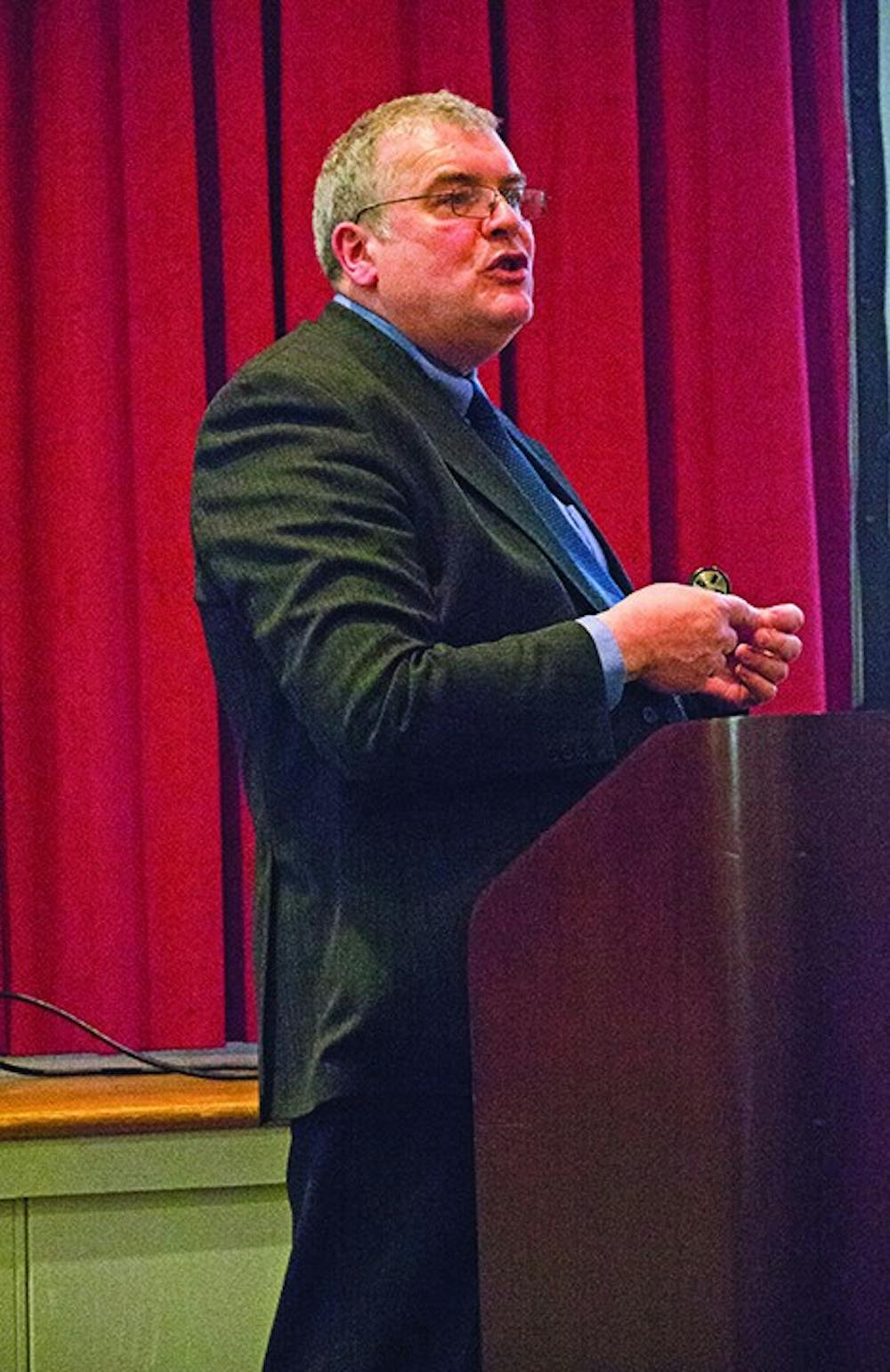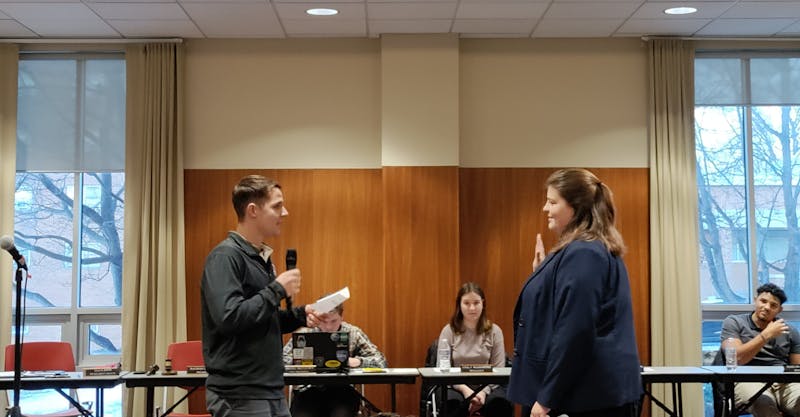Constant traffic came and went in Leicester, England, but no one knew they were walking over top the skeletal remains of a king.
Richard Buckley, the University of Leicester’s co-director of archaeological services, visited Shippensburg University on Thursday to discuss his experience as the lead archeologist on the Search for Richard Project in 2012.
He said Philippa Langley from the Richard III Society approached him with the idea about searching for King Richard III’s remains underneath the social services parking lot.
“I thought it was a mad crank phone call,” Buckley said.
It was known that the former king of England, who died in 1485,was buried in Leicester but no one knew where for sure. It was commonly believed the king’s body was removed from the church and dumped in the River Soar in Leicester after his corpse was brought back when he died fighting in the Battle of Bosworth.
A plaque was mounted on Bow Bridge honoring the king saying, “Near this spot lay the remains of King Richard III.”
What was initially, a seemingly wild idea turned into a three-week excavation funded by the University of Leicester and the Richard III Society.
“We had enough money to dig three trenches in three weeks with three people ... the project looked dead in the water,” Buckley said.
The crew dug trenches in the north and the south ends of the parking lot. On the first day, they uncovered two unidentified human leg bones. As the project continued, the team recovered stone rubble from demolished buildings and they concluded that the leg bones were discovered in the church where King Richard III was buried.
Following this finding, a skull and a curved spine were found in the trench, believed to be where the church once stood.
“The grave was poorly dug by the friars ... it’s amazing it survived at all,” Buckley said, adding it lacked a normal size, structure and even a coffin and pair of feet, which he believes were lost because of an 18th century gardener cutting through them.
“The body was laid in a grave that was too short ... the head was literally sticking up,” he said.
The team used tactics in forensic analysis such as radiocarbon testing and mitochondrial DNA to determine if who they uncovered was King Richard III. Tests determined the skeleton belonged to a male in his 30s, and it matched the king’s physical appearance of unequal shoulders, a curved spine and slender arms and thighs.
Research also concluded the cause of death, which provided further evidence that the remains were the former king’s body. Shallow injuries to the top of the skull were believed to be the wounds he suffered in battle.
“A blow from [a staff weapon], chopped off the base of the skull,” Buckley said.
Finally through DNA analysis, the team was able to trace the remains back to King Richard III’s oldest sister, Anne of York.
“As part of this, we also have to carefully check the family tree,” Buckley said.
They traced DNA back to King Richard III’s living relative, Michael Isben, through the research and confirmed the match. The skeleton undoubtedly belonged to King Richard III, he said.
“For me, the project wasn’t just about King Richard III, but contributing to the history of Leicester’s medieval period,” Buckley said.
Today, King Richard III’s remains are preserved in a tomb at the Leicester Cathedral. However, the plaque still stands at Bow Bridge, telling passersby the former king’s remains still lie near.





The Slate welcomes thoughtful discussion on all of our stories, but please keep comments civil and on-topic. Read our full guidelines here.